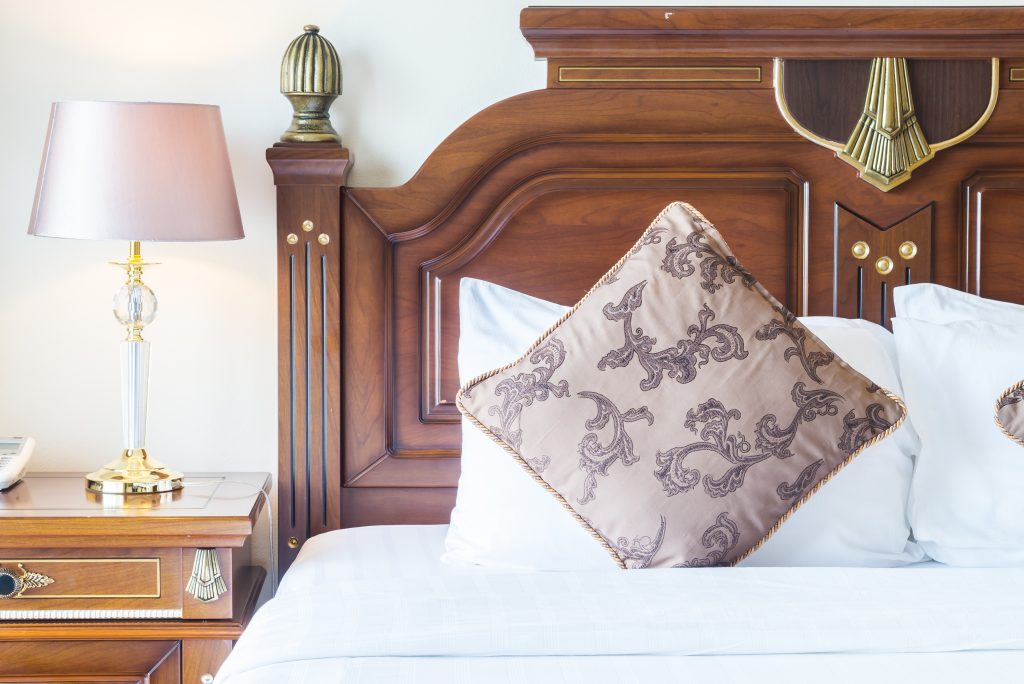
Choosing the right bed linen is essential for creating a comfortable and inviting bedroom. Among the most popular types of bed linen are sateen and percale, each offering distinct characteristics that cater to different preferences and needs. Understanding the differences between these two types of beautiful bed linen can help you make an informed decision that enhances your sleep experience. This article will explore the key differences between sateen and percale bed linen, examining their unique qualities, benefits, and drawbacks.
1. Understanding Sateen Bed Linen
Sateen bed linen is known for its luxurious feel and lustrous appearance. It is often chosen by those who prefer a silky smooth texture and a slightly shiny finish.
Weave Type: Sateen is made using a satin weave, where the threads are woven in a one-under, three-over pattern. This method exposes more of the thread surface, giving the fabric its signature sheen and smoothness.
Material: Typically, sateen bed linen is crafted from high-quality cotton, although it can also be made from other materials like polyester or a blend of fibres.
Feel and Appearance: Sateen has a silky, drapey feel that glides smoothly against the skin. Its shiny finish adds a touch of elegance and sophistication to any bedroom decor.
2. Understanding Percale Bed Linen
Percale bed linen, on the other hand, is prized for its crispness and breathability. It offers a more matte finish and a cooler touch, making it ideal for warmer climates or those who prefer a fresher feel.
Weave Type: Percale is woven in a simple one-over, one-under pattern, which creates a balanced, durable fabric. This tight weave contributes to its crisp texture and long-lasting quality.
Material: Like sateen, percale is usually made from high-quality cotton. However, it can also be found in other natural fibres such as linen.
Feel and Appearance: Percale has a cool, crisp feel that is often compared to the sensation of freshly laundered, ironed sheets. It has a matte finish that gives it a clean, understated look.
3. Comfort and Temperature Regulation
One of the primary considerations when choosing bed linen is comfort and how well it regulates temperature. Both sateen and percale offer different benefits in this regard.
Sateen: Sateen’s silky texture makes it exceptionally comfortable for those who enjoy a smooth, soft surface. However, because it is more tightly woven, sateen can retain heat, making it warmer than percale. This makes it a great choice for cooler climates or colder months.
Percale: Percale’s crisp, breathable fabric is ideal for those who tend to sleep hot. Its lightweight and airy nature helps to wick away moisture and promote airflow, keeping you cool and comfortable throughout the night.
4. Durability and Care
The durability and ease of care of your bed linen are important factors to consider, especially if you want your investment to last.
Sateen: While sateen is generally durable, its satin weave can be more prone to snagging and pilling over time. Proper care, such as washing on a gentle cycle and avoiding high heat, can help maintain its appearance and longevity.
Percale: Percale is known for its durability and can withstand frequent washing without losing its crispness. It becomes softer with each wash, making it more comfortable over time. Percale is less prone to pilling and can handle higher washing temperatures, making it easier to care for.
5. Aesthetic Appeal
The aesthetic appeal of your bed linen can significantly impact the overall look of your bedroom. Sateen and percale each offer distinct visual characteristics that can enhance different decor styles.
Sateen: With its smooth, shiny finish, sateen bed linen adds a touch of luxury and elegance to your bedroom. It drapes beautifully over the bed, creating a sophisticated and inviting look. Sateen is often available in a wide range of rich colours and patterns, allowing for greater design flexibility.
Percale: Percale’s matte finish and crisp texture give it a clean, classic appearance that works well with minimalist or traditional decor styles. It often comes in solid colours and subtle patterns, offering a timeless look that complements any bedroom setting.
6. Cost Considerations
The cost of beautiful bed linen can vary widely depending on the quality of the fabric and the brand. Both sateen and percale are available at different price points, but there are some general trends to be aware of.
Sateen: Due to its luxurious feel and intricate weaving process, sateen bed linen is often priced higher than percale. However, it is possible to find affordable options that still offer good quality.
Percale: Percale tends to be more budget-friendly, especially if you opt for standard cotton varieties. High-end percale made from long-staple cotton can be more expensive but offers excellent durability and comfort.
7. Personal Preferences and Lifestyle
Ultimately, the choice between sateen and percale bed linen comes down to personal preference and lifestyle needs.
Sateen: If you prefer a silky, luxurious feel and don’t mind a bit of extra warmth, sateen is an excellent choice. Its elegant appearance can add a touch of glamour to your bedroom.
Percale: If you value crispness, breathability, and ease of care, percale is the way to go. Its cool, fresh feel is perfect for hot sleepers or those living in warmer climates.
Conclusion
Understanding the differences between sateen and percale bed linen can help you make an informed decision that enhances your sleep quality and bedroom decor. Sateen offers a silky, luxurious feel with a lustrous finish, ideal for those who enjoy a bit of warmth and elegance. Percale, with its crisp, breathable texture and matte finish, is perfect for those who value cool comfort and durability. By considering your personal preferences, climate, and aesthetic goals, you can choose the perfect beautiful bed linen to create a stylish and comfortable bedroom retreat.